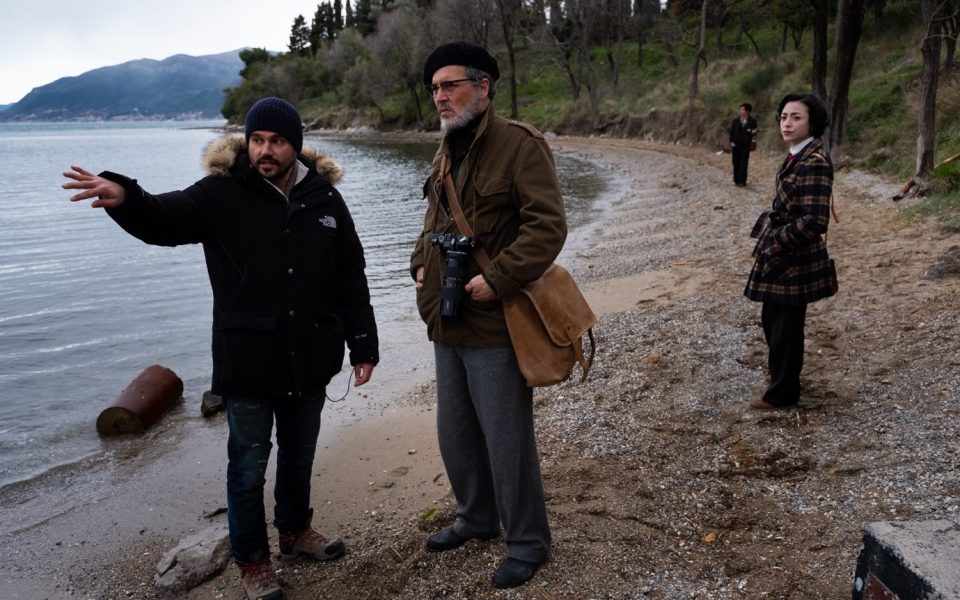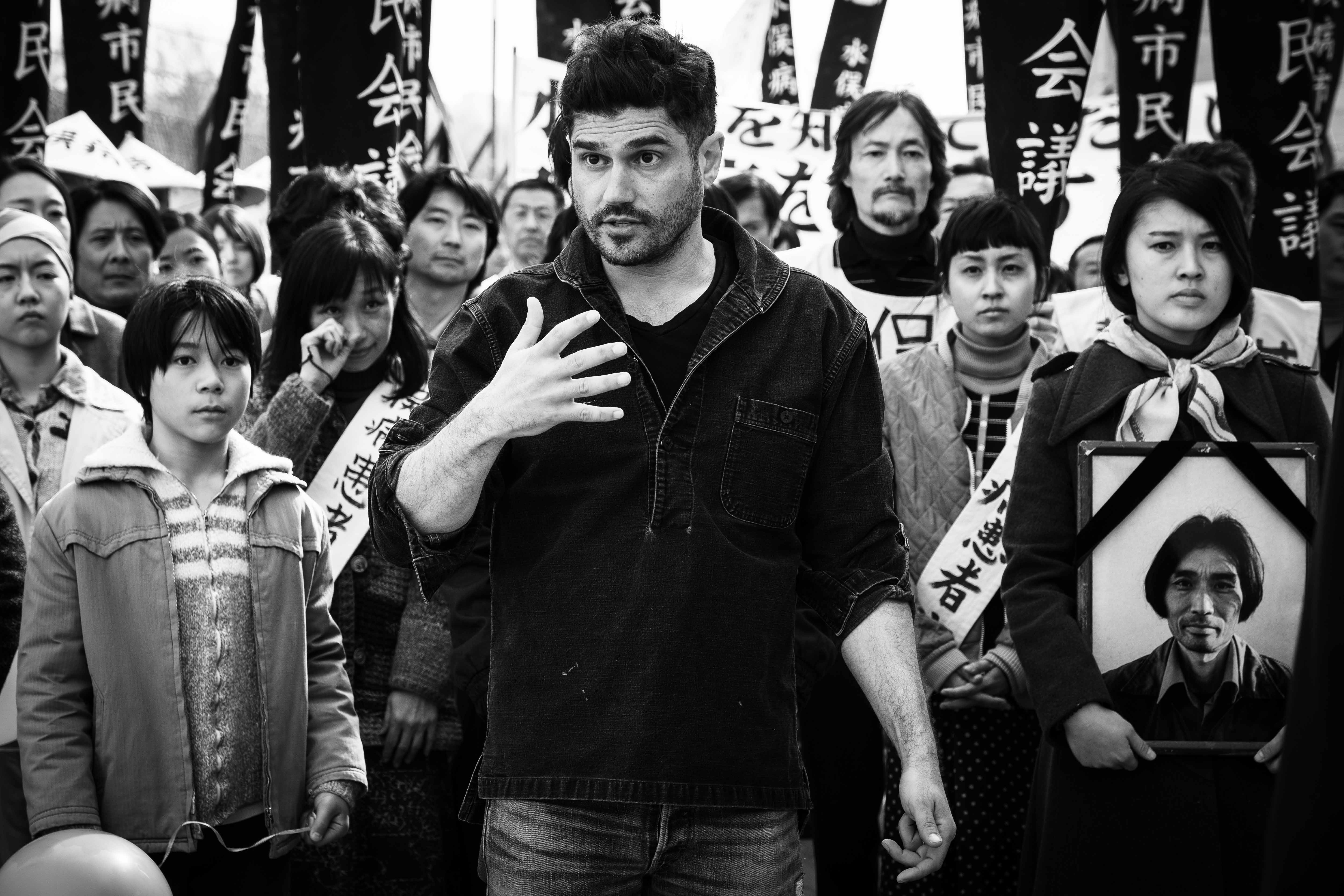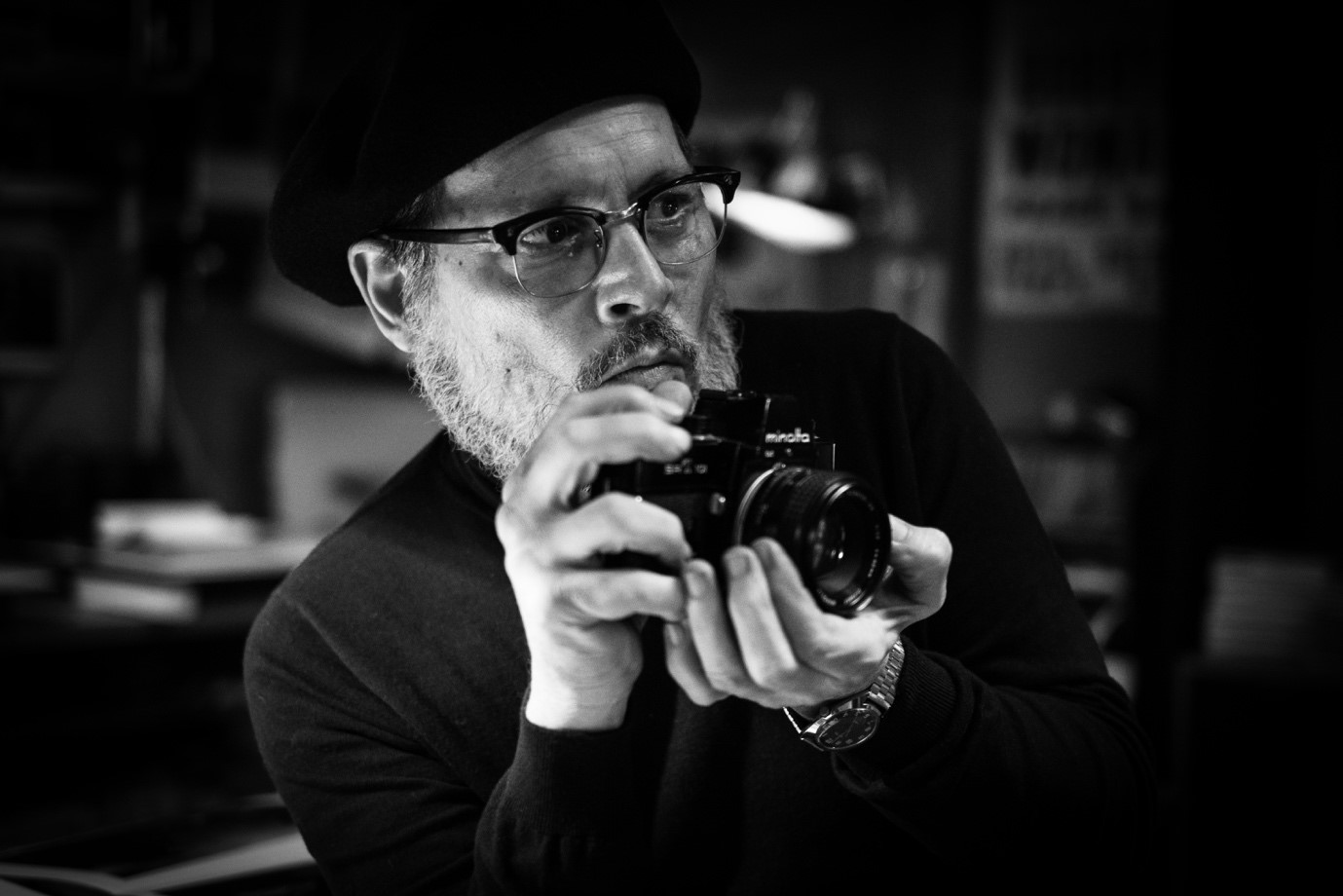The ‘Minamata’ project: Hope through despair

Like a modern-day Pieta, the lens captures a mother cradling her deformed child while bathing her. “Tomoko in her Bath,” taken by influential American photojournalist W. Eugene Smith in 1971, is the starting point for more than just the film drama “Minamata,” directed by US artist and director Andrew Levitas.
Inspired by Smith’s work, Levitas presents a multifaceted project to tell the story of Minamata, a Japanese village suffering from the effects of widespread mercury poisoning caused by industrial pollution, when the photojournalist was there to memorialize and share the agony of its inhabitants with the wider world.
Levitas uses film to share the story with a new global audience, one that has mostly forgotten the small village. The artist also complements the movie with an exhibition of metalwork installations, currently displayed at the Basil and Elise Goulandris Foundation in central Athens.
However, the movie does not wallow in the despair. Levitas reveals how Smith’s “Tomoko in her Bath” inspired him to see beyond the evil and find the good. He glimpsed into the duality of human nature with one image, with Tomoko’s condition speaking to the very worst of human indifference and callousness juxtaposed with the love of a mother.
Duality runs all through his “Minamata” work. His metal pipe installation is the bringer of both life (water) and death (mercury poisoning). In the film, almost no character is past redemption and salvation, especially the troubled protagonist Eugene Smith.
This is most likely because Levitas, in his own words, seeks “not just to condemn but to uplift and inspire.” Because the ultimate message of the project is hope. The fight is not lost. Everyone is capable of change; everyone can make a difference. Perhaps this is why the movie starts with the thumping 70s rock anthem by Ten Years After “I’d Love to Change the World” and Levitas hopes he can leave it up to you.

How did you find the story of Minamata? In your own words, it is one of the relatively unknown disasters of the last century.
I remember as a young boy, around 13 or 14, seeing Eugene Smith’s photo essay on Minamata and I remember it impacted me in quite an emotional way, but I did not fully understand the feelings at the time. I remember seeing the horrors of man and understanding that, especially with “Tomoko in her Bath,” this was a result of man’s actions. At the same time, I felt an incredible connection to the relationship between the mother and her child and feeling somehow hopeful and uplifted. It was really complicated, because I was looking at something I could not quite understand but it was so rich with context. I now recognize it differently. I understand the brilliance of Smith to find and be able to capture singular moments that were both reflective of the absolute worst of humanity and the absolute best. Our nature is such that we see the love, hope and compassion more than we see the negativity or the darkness. It helps us to believe that light will conquer, and light will win out.
What I found so dynamic about the Minamata story, and why I felt compelled to make this film, is that you have a community that was victimized but broke cultural norms to band together and fight for what was right against impossible odds. I felt because the story was so far from what we know – this little, small pocket in Japan with a specific dialect – in many ways it was more relatable. It takes place in what feels so far away but, watching the film, I hope audiences will be able to realize that it is a story about their cousin or their neighbor or their friend. I hope this will have the added impact of hopefully speaking to this idea that we are all one people globally and dealing with the same issue. They come in different manifestations, but we are all dealing with the same issues, like industrial pollution, corporate greed, governments not supporting everyone equally. It felt quite right in that way – that it could go further than something we know about.
It is interesting we’re in the middle of this pandemic and still somehow there is no global unity. I feel there is a missed opportunity here that I feel quite upset about. It seemed like the one time that every government and every person could and should have banded together because, ultimately, we are all in it together. I came of age when the world seemed to be getting smaller, and I mean that in a good way. There was more collaboration between governments and people, we all seemed to be moving in a similar direction, a right direction, and over the last few years we have seen borders closing, countries removing themselves from alliances, stepping away from the greater good. It felt this was the time to remind people that we are in it together.
Apart from the universal message of the film, was there a feeling that the film’s message felt more poignant to a Japanese audience?
Very much so. I traveled to Minamata with Aileen Mioko Smith [who was married to W. Eugene Smith], and I met with many of the Minamata patients and the relatives of those who passed away and I asked for their permission to make this film. I explained to them the content of the story, how I was going to do it, and that ultimately the story was about them. I had a big movie star and some other Western stars that could get global attention for the cause and for the film, but ultimately all those characters would fade into the background in the second part of the film when our audience would have fallen in love with the heroes, the people of Minamata.
They left me with a very powerful marching order. “We are happy for you to make this film. We want you to make this film, but don’t do it for us. Do it for everyone else. There should be no more Minamatas. Don’t make our suffering be in vain. Try to add value to what has happened to us.” They said, “Bring us into the light so that we can help others avoid what we went though,” and it was very powerful and inspiring and it helped me carry through various difficult moments in the making of this film.
Speaking of difficulties, was the involvement of Johnny Depp – with his recent controversies and his relationship with the media – one of these?
I cannot speak to what is real or not, other than to say that Johnny was an incredible collaborator and artist and became a wonderful partner. His involvement and support creatively allowed me to have the freedom and strength to create a film like this that cannot be made without the support of a global movie star. Someone who can justify the economics, and who is willing to put their time, their energy and their spirit, soul, and everything they have into a project for all the right reasons. This wasn’t a commercial enterprise; we all made the film because we believed this is something that needed to be said and seen. It is quite complicated, because this movie would not have been made without the enormous sacrifices and enormous support of Johnny Depp, and when we premiered at the Berlinale, despite a glowing reception, some journalists took shots at Johnny over his personal life. For a studio to fear the backlash of a handful of journalists who might take it upon themselves to view the personal life of one actor, one element of the film, as more important than the message of the film, the essence of the film, and all the victims of industrial pollution is incredibly disappointing to me. At some point we need to stand up for what we believe in as people, and for some to realize how fortunate they are and how much of a difference they can make in people’s live by championing these types of stories and by doing the right thing.

Why did you make the artistic choice to pursue a feature film rather than a documentary format?
I’m a heavy consumer of that kind of documentary and literature. While there is an incredible artistic relevance, and while books and documentaries have an important place among thinkers and raise awareness, they often do not hit the average person – the person walking down the street who does not have the time because they are dealing with putting food on the table or paying rent. Feature films have an ability to draw people for other reasons. They can watch a movie because of a movie star or because they liked the trailer, because it’s Saturday night and they want to go out with their family or partner and are looking for something different. Then you have the ability to create nutritious content that is still exciting and dynamic that has all the earmarks of a Hollywood movie but has these other elements in it that have a larger impact globally because people will watch it. Some of the people who watch “Minamata” will step away and will have an interest and seek out documentaries and books to educate themselves.
The other thing I find with more critical content for an everyday audience is that they have a tendency of not focusing on emotion, feelings and human connectivity. It is that feeling of emotional resonance and the ability to see ourselves in a story that’s played out in front of you. It is that connectivity and that resonance that can uplift and inspire people to action and foster a certain sense of curiosity and creativity to chase it. Feature films are my focus as a filmmaker to find ways to uplift, inspire and inform while creating enjoyable dynamic content because I think that’s the way to get people to engage with an issue.
What brought “Minamata” and you to Athens? How did the partnership with the Goulandris Foundation materialize?
I have a great many friends that are Greek, and I have spent an enormous amount of time in Greece over the years. I have a great interest in Greek mythology and antiquities in general. I have always looked at Greece as a home away from home. I feel very comfortable in Athens and, like everyone else, I love the islands. As soon as our quarantine was lifted and it was safe to travel, we immediately went to the Aegean. I love it, I love the food, and the people.
That said, the actual history of the project with the museum was not based on the film itself. They had reached out to me to see if I wanted to exhibit any of my work and what that would be. It happened to coincide with the sculptural work that I was doing, the final part of the Minamata project. The most boiled-down essential truth is expressed through these sculptures. I spent a lot of time working on industrial pollution, trying to find a unifying thread between all of humanity and ways that can unite us. My process is to constantly refine the ideas and sometimes the final work is a film, a short story, a poem, a sculpture.
The film is for a broader audience in a way. It is the idea inside of it – how do I boil down and find the most basic essential truth? I always try to express it in the most refined way possible. The film is that expression over two hours but you can walk through the sculpture exhibition in 15 minutes and understand these bigger themes. I think they are quite clear in what they are, they are complex but have the ability that when you see them you can take away from that experience something in your heart that inspires thought, curiosity and, hopefully, offers hope and connectivity with the world at large.
“Minamata” is currently in cinemas in Greece and the sculpture installation is on display at the B&E Goulandris Foundation’s temporary exhibitions area through November 28.





